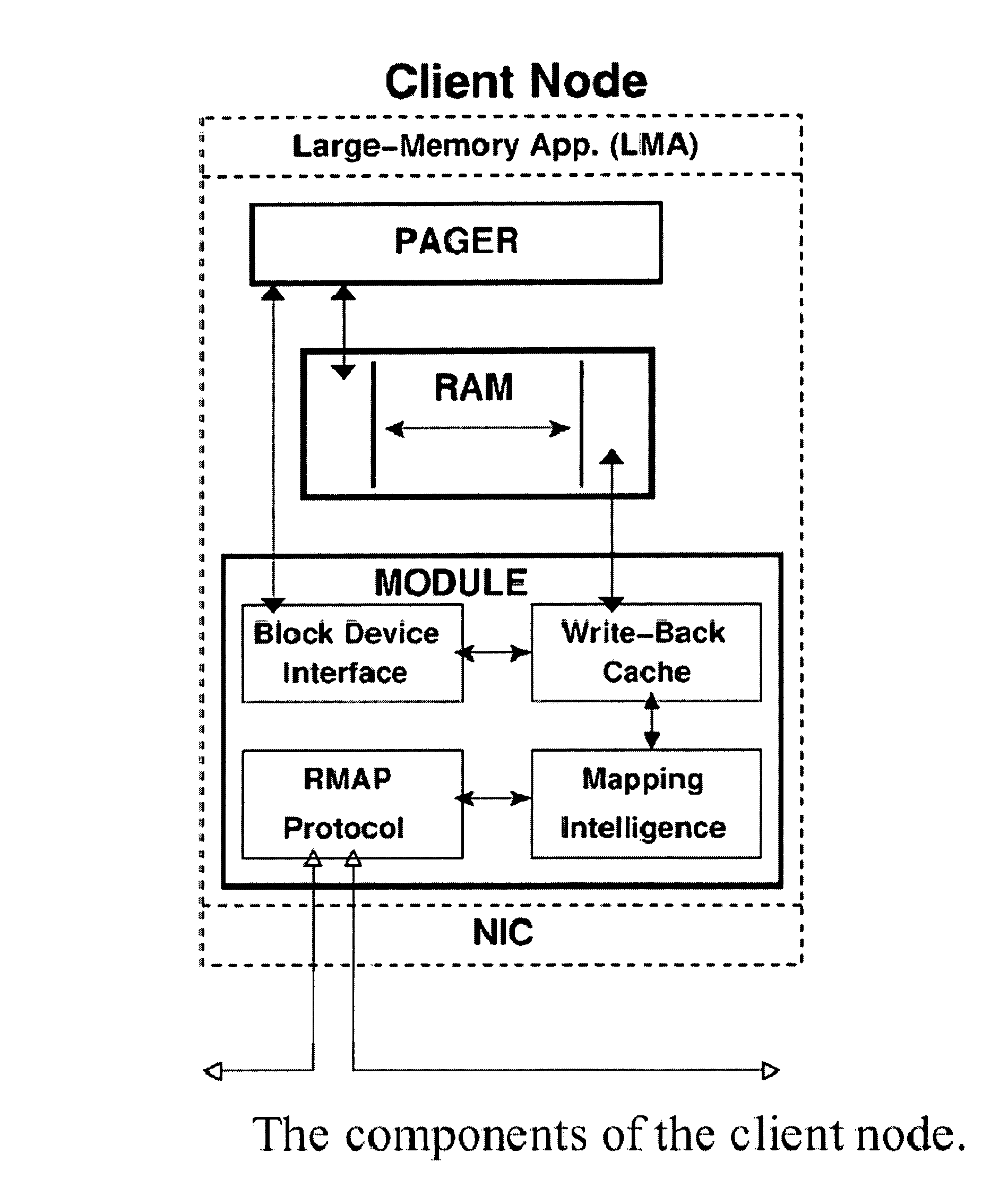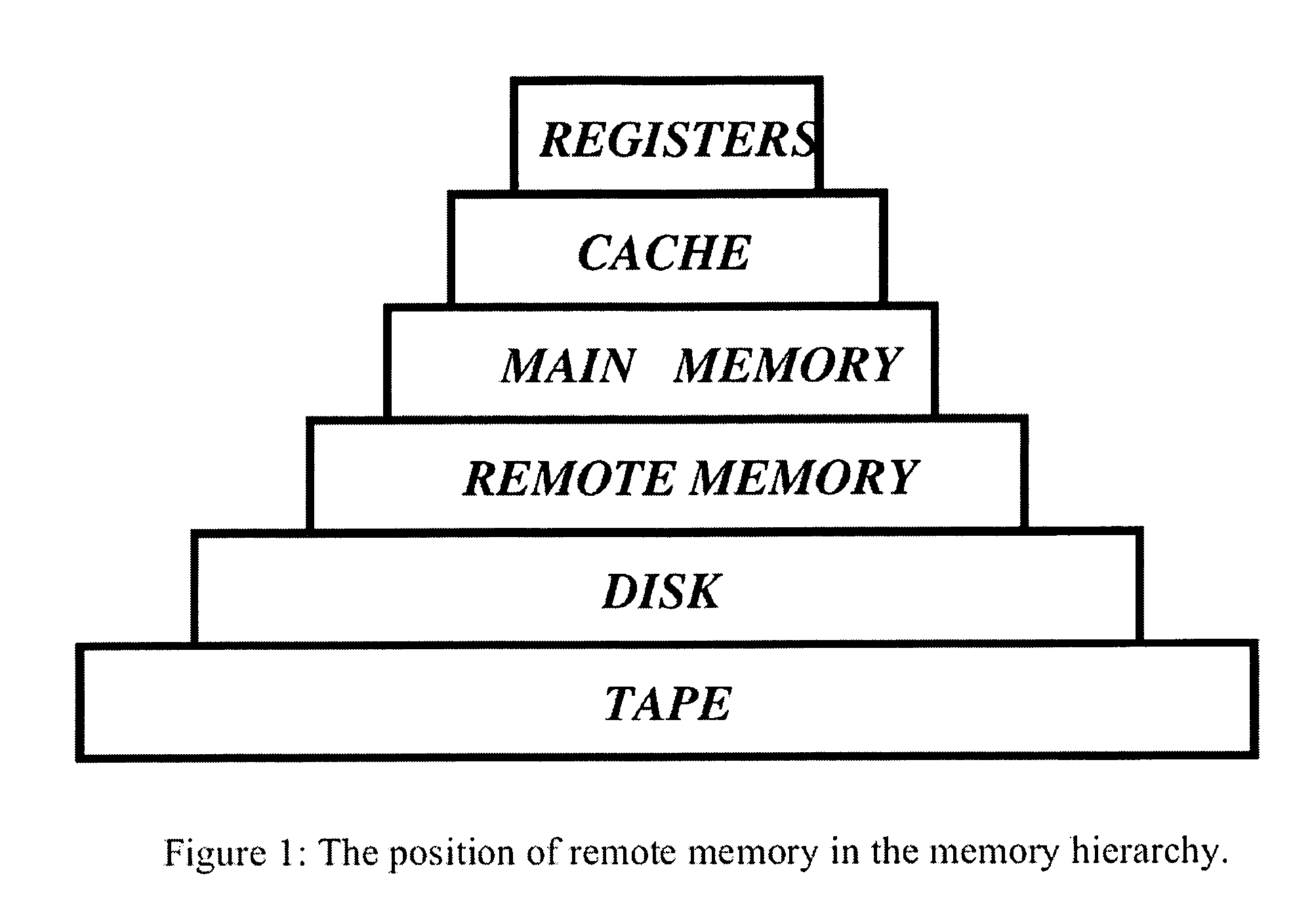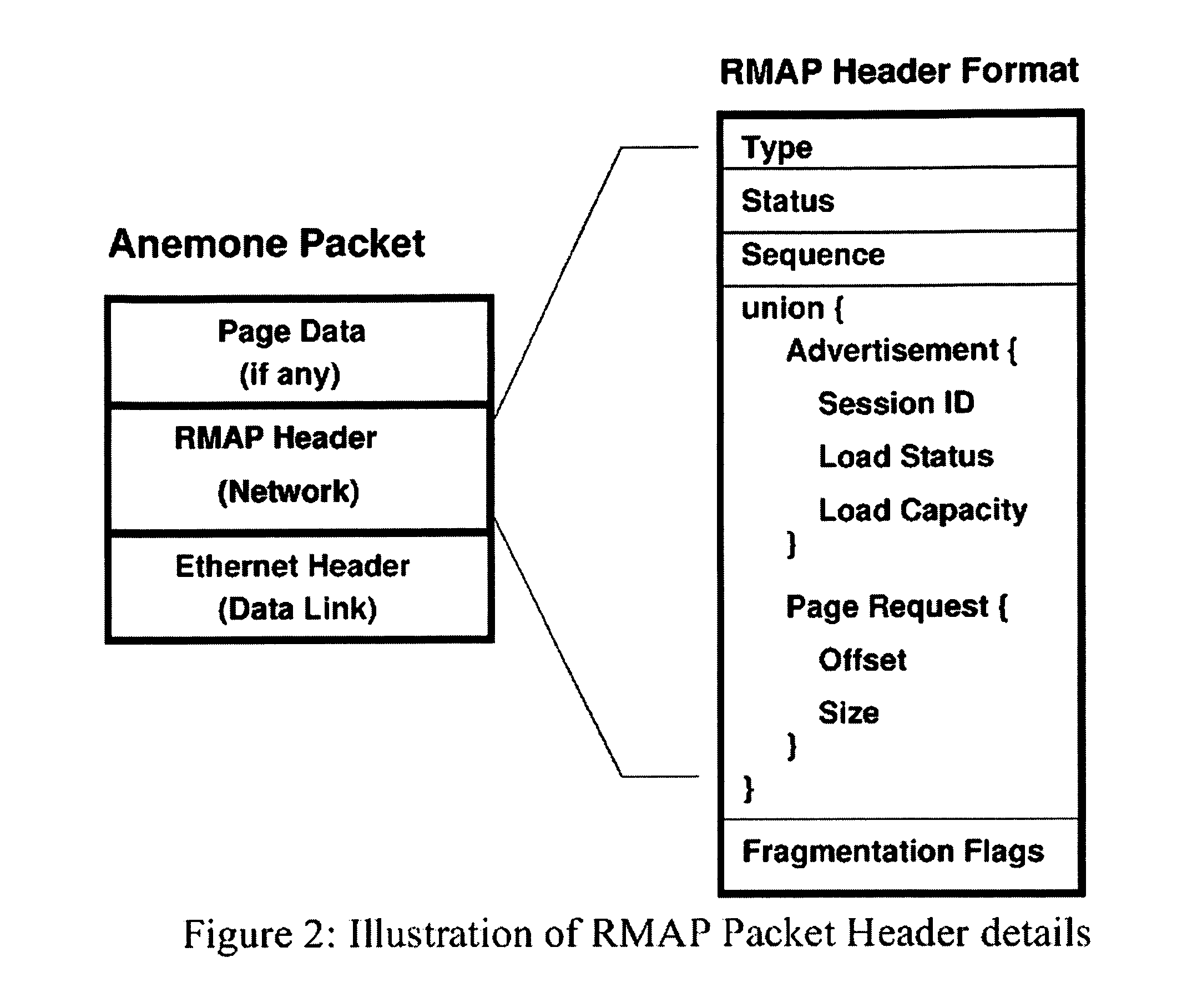Distributed adaptive network memory engine
a network memory and adaptive technology, applied in the field of distributed adaptive network memory engines, can solve the problems of large seek latencies, large memory requirements, and incomplete implementation of known implementations, and achieve the effects of avoiding disk latencies, avoiding performance interference from local disk activity, and increasing the probability of failur
- Summary
- Abstract
- Description
- Claims
- Application Information
AI Technical Summary
Benefits of technology
Problems solved by technology
Method used
Image
Examples
Embodiment Construction
[0041]The system according to a preferred embodiment of the present invention is implemented as follows:
[0042](A) Client and Server Modules
[0043]FIG. 3 shows the client module that handles the paging operations on client-side. That client module has four major components: (1) The Block Device Interface (BDI), (2) a basic LRU-based write-back cache, (3) a mapping logic that tracks the location of swapped-out pages on different servers, and (4) a Remote Memory Access Protocol (RMAP) layer, which reliably handles communication between the client and servers. The pager issues read and write requests to the BDI in 4 KB data blocks. The BDI, in turn, performs read and write operations to the LRU-based write-back cache. When the cache reaches its capacity, one of the least-recently used dirty pages is evicted to one of the servers using RMAP. Furthermore, a dirty page is not written back to a server until it is chosen for eviction. FIG. 4 illustrates the server module which handles paging ...
PUM
 Login to View More
Login to View More Abstract
Description
Claims
Application Information
 Login to View More
Login to View More - R&D
- Intellectual Property
- Life Sciences
- Materials
- Tech Scout
- Unparalleled Data Quality
- Higher Quality Content
- 60% Fewer Hallucinations
Browse by: Latest US Patents, China's latest patents, Technical Efficacy Thesaurus, Application Domain, Technology Topic, Popular Technical Reports.
© 2025 PatSnap. All rights reserved.Legal|Privacy policy|Modern Slavery Act Transparency Statement|Sitemap|About US| Contact US: help@patsnap.com



